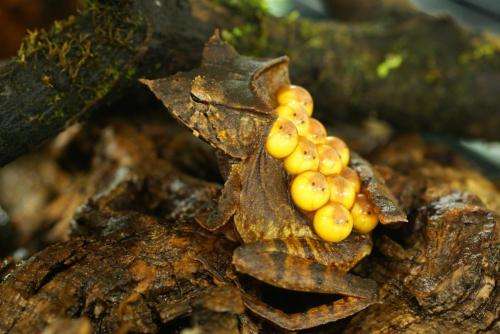Genetic matchmaking saves endangered frogs

What if Noah got it wrong? What if he paired a male and a female animal thinking they were the same species, and then discovered they were not the same and could not produce offspring? As researchers from the Smithsonian's Panama Amphibian Rescue and Conservation Project race to save frogs from a devastating disease by breeding them in captivity, a genetic test averts mating mix-ups.
At the El Valle Amphibian Conservation Center, project scientists breed 11 different species of highland frogs threatened by the chytrid fungus Batrachochytrium dendrobatidis, which has already decimated amphibian populations worldwide. They hope that someday they will be able to re-release frogs into Panama's highland streams.
Different frog species may look very similar. "If we accidentally choose frogs to breed that are not the same species, we may be unsuccessful or unknowingly create hybrid animals that are maladapted to their parents' native environment," said Andrew J. Crawford, research associate at the Smithsonian Tropical Research Institute in Panama and professor at Colombia's Universidad de los Andes. Crawford and his colleagues make use of a genetic technique called DNA barcoding to tell amphibian species apart. By comparing gene sequences in a frog's skin cells sampled with a cotton swab, they discover how closely the frogs are related.
New knowledge about frog genetics contributes to saving amphibians from extinction, the mission of the Panama Amphibian Rescue and Conservation Project. Participating institutions include Africam Safari, Panama's Autoridad Nacional del Ambiente, Cheyenne Mountain Zoo, Defenders of Wildlife, El Valle Amphibian Conservation Center, Houston Zoo, Smithsonian's National Zoological Park, the Smithsonian Tropical Research Institute and Zoo New England.
More information: Crawford, A.J., Cruz, C., Griffith, E., Ross, H., Ibanez, R., Lips, K., Driskell, A.C., Bermingham, E. and Crump, P. 2013. DNA barcoding applied to ex situ tropical amphibian conservation programme reveals cryptic diversity in captive populations. Molecular Ecology Resources. doi: 10.1111/1755-0998.12054
Provided by Smithsonian Tropical Research Institute



















